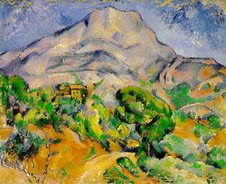It's my aim, ambitious and possibly unrealistic, to put something up each day, no matter how small. It gives this retiree something to do, a structure to one's day, so to speak, and in the longer term might help to raise the profile of this blog in what is now a densely populated blogosphere. A daily blog means that my D&D raison d'être will not , and cannot, be followed too slavishly. Yes, it would be nice if folk felt they could open up here about the things they are striving to achieve in life, but it may be a while before that happens. Possibly my dream of creating this particular blogging niche is an unrealistic one -but that won't stop me trying. Nothing ventured, nothing gained, as they say. So while I patiently wait for the world to beat a path to my door, in search of that better metaphorical mousetrap, I must draw on all my resources to keep things gently simmering away on this site.
It was tragic event, currently dominating the news, that made me realize there's room here for a particular slot that fits with my interests, background and training. It's the one to do with matters pertaining to human health, backed up, if I might say, with a string of degrees (including a doctorate) in biochemistry.
The event in question was the discovery by a maid at a Corfu bungalow of two dead children and two unconscious adults. The man was the children's natural father, divorced from t heir mother back in England. He and his new partner had taken the children away for a half-term holiday. To this retired scientist, the initial press reports were baffling. No, we were "reliably" informed , this was not carbon monoxide poisoning : the hotel, in whose grounds the bungalow was situated, did not use gas, since the heating was by electricity. (That, as we now know, was not the whole story, more on that later). It must have been something they had eaten, we were told. Possibly food-poisoning from eating out somewhere, maybe "mushrooms". Mushrooms ? The mind boggles ? Had someone, a local restaurateur perhaps, been harvesting local toadstools, and serving them up as "mushrooms". The needle on hippo's mental CDM (crap-detecting meter) shot off scale on hearing that version of events .
heir mother back in England. He and his new partner had taken the children away for a half-term holiday. To this retired scientist, the initial press reports were baffling. No, we were "reliably" informed , this was not carbon monoxide poisoning : the hotel, in whose grounds the bungalow was situated, did not use gas, since the heating was by electricity. (That, as we now know, was not the whole story, more on that later). It must have been something they had eaten, we were told. Possibly food-poisoning from eating out somewhere, maybe "mushrooms". Mushrooms ? The mind boggles ? Had someone, a local restaurateur perhaps, been harvesting local toadstools, and serving them up as "mushrooms". The needle on hippo's mental CDM (crap-detecting meter) shot off scale on hearing that version of events .
 heir mother back in England. He and his new partner had taken the children away for a half-term holiday. To this retired scientist, the initial press reports were baffling. No, we were "reliably" informed , this was not carbon monoxide poisoning : the hotel, in whose grounds the bungalow was situated, did not use gas, since the heating was by electricity. (That, as we now know, was not the whole story, more on that later). It must have been something they had eaten, we were told. Possibly food-poisoning from eating out somewhere, maybe "mushrooms". Mushrooms ? The mind boggles ? Had someone, a local restaurateur perhaps, been harvesting local toadstools, and serving them up as "mushrooms". The needle on hippo's mental CDM (crap-detecting meter) shot off scale on hearing that version of events .
heir mother back in England. He and his new partner had taken the children away for a half-term holiday. To this retired scientist, the initial press reports were baffling. No, we were "reliably" informed , this was not carbon monoxide poisoning : the hotel, in whose grounds the bungalow was situated, did not use gas, since the heating was by electricity. (That, as we now know, was not the whole story, more on that later). It must have been something they had eaten, we were told. Possibly food-poisoning from eating out somewhere, maybe "mushrooms". Mushrooms ? The mind boggles ? Had someone, a local restaurateur perhaps, been harvesting local toadstools, and serving them up as "mushrooms". The needle on hippo's mental CDM (crap-detecting meter) shot off scale on hearing that version of events . I was sceptical to say the least. Firstly, food poisoning comes on in stages - nausea, vomiting etc. Given there were 4 people affected, at least one of them should have been able to raise the alarm. The fact that not one of them did so pointed strongly to poisoning by that age-old hazard to human existence, namely carbon monoxide gas.
As molecules go, its chemical structure could hardly be simpler (see graphic above ). One carbon atom (shown black) bonded to a single oxygen atom (red), instead of two oxygen atoms as in carbon dioxide. CO, in other words, instead of CO2. Geekish aside: CO is really C1O1, but chemists don't waste time writing 1 if there's only one of a particular atom).
As a young teenager, I was briefy into home chemistry, and quickly tired of the tame offerings of the shop-bought chemistry sets. I gradually won the trust of my local "chemist" (pharmacist) who in those days kept laboratory type chemicals for hobbyists etc, or could order them in.
When I told my school chemistry teacher about the new, and potentially hazardous hobby, he immediately expressed concern as to precisely what I was doing. I recall the occasion when I said I was proposing to make carbon monoxide. "Well, you had better be exceedingly careful " he said, " because before you know what, your knees will just go from under you, and someone, your parents as likely as not, will find you slumped there, unconscious if you're lucky, but more likely dead".
They said some or all the 4 victims in Corfu had been sick, a symptom of CO poisoning, but there was no mention of the classic tell-tale syptom - cherry red lips and fingernail-beds . Maybe the staff missed it. But what about the paramedics and hospital ? Did they miss it too ? Does that mean that the surviving couple weren't immediately administered oxygen, which is the first line of treatment, one that might not only get them quickly conscious again, but also spare them from serious long-term consequences ?
Why then is carbon monoxide gas so deadly? Firstly: it's highly potent. A fraction of 1% in the air you breathe can incapacitate and kill in less than 20 minutes. Secondly, it's ubiquitous. It's formed in the vicinity of any appliance that burns fossil fuel. That could be natural gas (methane), or charcoal (elemental carbon). The main danger comes from poorly ventilated gas burners, or from the foolhardy burning of wood, coal or charcoal indoors without a proper flue or chimney.
Sorry hippo, was there something you wanted to say ?
Yes, just a macabre aside: burning charcoal indoors is now a common way of committing suicide in Japan, especially among cults. Seems that running a car in a closed garage doesn't work reliably anymore, now that cars have catalytic converters as standard.
Stop press: my CDM's just gone off scale again. I've just seen the following in today's Sunday Times, under the heading "Carbon Monoxide:the Facts":
"(CO is) a heavy gas: it builds from the floor up ....."
That too is crap, if you'll pardon my French. There's an awful lot of it in the MSM these days. For the record, CO has a density that is almost identical to that of nitrogen (N2) the major constituent of air (approx 78%). And it is somewhat less dense than oxygen (comprising 21% of air). One can only assume that the ST has its CO confused with its CO2.
Vapour densities of gases can be calculated by working out the molar masses, from the relative atomic masses, and then dividing by two. The figures are: 14, 14, 16 for CO, N2 and O2 respectively. CO2, in contrast, is much higher (22).
Thank you for that hippo. It's good to see you putting that hypercritical tendency of yours to good use once in a while. While on the subject of real science, instead of the dumbed-down, often inaccurate stuff we get from the MSM, let's mention in passing that carbon monoxide is a somewhat reactive molecule, especially in the body, on account of having a so-called lone pair of electrons. They are on the carbon (not oxygen) atom, which is somewhat unusual and what makes CO so dangerous where folk are concerned. . CO , with its deadly lone pair, has a powerful affinity for certain electron-deficient atoms, notably transition metals (iron, copper etc) *(see footnote)
I bet none of your audience have read that before in their newspapers. Have you Sarah ? Have you Diane ? Hope I haven't overlooked anyone important.
A prime target for CO are iron-containing proteins, of which the body has several - haemoglobin in the blood, myoglobin in the muscles, and cytochromes in the tissues.
Now, in a normal healthy individual, the job of haemoglobin is to transport oxygen from lungs to tissues. The oxygen molecule bonds to the iron at the centre of the red haem molecule.
ed : the following sentence was inadvertently omitted from the first posting , the result of relegating detail to a footnote. Apologies to early birds for an apparent non sequitur.
We are accustomed to thinking of CO purely external threat, avoidable in principle, though sadly, and tragically, not always in practice. In fact small amounts of CO are produced naturally in the body . They attach to haemoglobin at the binding sites intended for oxygen, blocking it thereafter from doing its job. As much as 5% of our haemoglobin is rendered hors de combat by our own endogenous CO.
In smokers the percentage of haemoglobin blocked (and therefore useless for carrying oxgen) is even higher -typically up 9%. And it's higher still, up to 50% and higher (!), in cases of acute exposure.
Incidentally, if you'll forgive another digression, I and my family, once had a narrow escape ourselves, way back in the 1950s. We had gas, supplied through a meter, for various purposes: for cooking, for the gas poker (used to get the coal fire going) , and for heating the upstair bedrooms, in those funny little grates with the lacy earthenware elements. And it was not natural gas (methane, CH4) in those days, but coal gas, mainly hydrogen (H2) but with a hefty amount of carbon monoxide.
Sticking one's head in an oven (unlit, I hasten to add) was an all too common means of committing suicide in those days.
Sometimes, if one was using the gas cooker, the flame would go out. Another sixpence was needed in the meter. The danger was when one did not have a coin to hand, and forgot to turn off all taps - on the cooker, or other outlets in the house. That's what must have happened once, and then someone returned late at night, probably my Dad god bless'im, who, on finding there was no gas for making a cuppa, put sixpence in the meter, and then went to bed . The house then gradually filled up with gas from an open tap. I woke next morning, feeling groggy, with a headache, and was violently sick on the bus on the way to school. It wasn't till getting home that night (no mobile phones!) that I found everyone else had suffered one way or another with these classic symptoms of CO poisoning.
To return to Corfu: sadly, there are now two children to be buried. How awful for the natural mother, to have heard the news, and then have to travel to Corfu to identify them. And how awful for the father and partner, both still very ill apparently, who , it is reported, have yet to learn about the children.
The next few days and weeks will be critical for the two survivors. There is a common misconception that once CO levels in the blood have fallen, one must be on the road to recovery. Sadly that is not always the case. Why ? Because contrary to popular belief (including, sad to say, some in the medical profession) CO poisoning is not just about temporary "internal suffocation" from the blood being unable to carry enough oxygen for the brain and other tissues. CO has more subtle and complex longer term action in the body . You can learn more if you go to Wikipedia.
To give just one example: CO can interfere with the way another reactive small molecule, nitric oxide (NO )is handled and metabolised in the body, that can impact on brain and nerve function. That may explain why some victims of CO poisoning suffer long term or permanent neurological impairment. Thus my concern at the apparent delay in identifying CO as the culprit, and with it the delay in administering oxygen. Although the hotel said initially it was not using gas for heating, it was used in, or adjacent to, the bungalows to fire boilers for heating water. Depending on which report you read, there was also apparently another gas water heater inside the bungalow, and, just for good measure, there was air-conditioning plant that might have blown fumes from the adjacent boiler into the bungalow.
An accident waiting to happen, some might say.
And on TV last night they interviewed an English lady who had stayed in the same bungalow a few days back, and returned ill from her holiday. She needed three days in hospital to recover, and described all the classic symptoms of CO - knees giving way etc . What they didn't say was whether her hospital had identified CO poisoning or not. If not, why not ? Surely there have been enough cases of CO poisoning on holidays, foreign or otherwise, to make a a CO test advisory or mandatory even if someone returns complaining of headache, nausea, vomiting , muscle weakness etc?
It's clearly for the courts to determine culpability - but already charges of manslaughter are likely to be brought against the hotel owner, the manager and maintenance staff. Personally I find it incredible that anyone staying in a hotel can be exposed to CO, especially one that is subject to EU safety inspections. Carbon monoxide detectors are relatively cheap these days, and should be installed as standard anywhere within the vicinity of a boiler fired with gas or other carbon-based fossil fuel. Without wishing to start an EU-bashing exercise ( many of its rules in water purity, beach standards etc have forced the UK to clean up its act) I do ask where those rules and regulations are when you most need them. CO is a silent, odourless, insidious killer, as we have seen again. So why are the same mistakes made over and over again ? Two young lives, snuffed out, just like that, and the prospect of lifetime of grief and despair for the families concerned.
Without wishing to sound officious: have you had your gas boiler checked and serviced recently ? Do you know the signs of a poorly-ventilated boiler, that could be letting CO seep into the house? Look for sooty streaks on the surrounding wall. Better still, go out and buy a CO detector.
* Curiously (and not many people know this) one in 20 haem molecules in the blood of even the healthiest people is blocked by CO that is formed NATURALLY in the body. Oddly enough, it's the haem molecules being broken down at the end of their useful lives - finally to bilirubin - that produces natural CO.
I once used to work in the area of bilirubin metabolism, having done 2 years of research in a Philadelphia medical school on phototherapy of neonatal jaundice. While there, and giving reports of my research, I met scientists, doctors, biochemists even, who did not know about natural CO, and must have wondered if I was a naif who had his CO confused with his CO2. But believe me, there is some weird and wonderful chemistry going on inside our bodies, which is what attracted this 'pretty colours, stinks and bangs' home chemist to the subject in the first place.
I once used to work in the area of bilirubin metabolism, having done 2 years of research in a Philadelphia medical school on phototherapy of neonatal jaundice. While there, and giving reports of my research, I met scientists, doctors, biochemists even, who did not know about natural CO, and must have wondered if I was a naif who had his CO confused with his CO2. But believe me, there is some weird and wonderful chemistry going on inside our bodies, which is what attracted this 'pretty colours, stinks and bangs' home chemist to the subject in the first place.









No comments:
Post a Comment